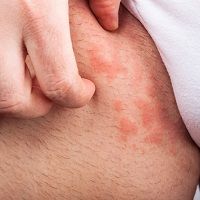Article
Rheumatoid Arthritis Drug Tofacitinib Can Successfully Treat Eczema
Author(s):
Supposedly "unbeatable" eczema (atopic dermatitis) can be successfully treated using tofacitinib, suggest findings published in the Journal of the American Academy of Dermatology.

Supposedly “unbeatable” eczema (atopic dermatitis) can be successfully treated using a common rheumatoid arthritis (RA) drug, suggest findings published in the Journal of the American Academy of Dermatology.
Researchers from Yale University studied six patients in order to evaluate the efficacy of the oral Janus kinase (JAK) inhibitor tofacitinib in the treatment of moderate to severe atopic dermatitis. The patients had all failed standard atopic dermatitis treatment. The researchers noted that the existing treatments for atopic dermatitis are often inadequate for the patients who suffer from it.
The patients were treated with tofacitinib citrate and their response to the treatment was assessed using the Scoring of Atopic Dermatitis index.
In all patients included in the study, tofacitinib improved sleep and reduced itch significantly. The patients also showed reduced redness and thickening of the skin. The scoring index of the patients decreased from 66.6 percent, from 36.5 to 12.2 between weeks 8 and 29 of treatment. There were no adverse events reported by the participants.
“These individuals were not only very happy with the results, they also expressed a tremendous sense of relief at being comfortable in their skin for the first time in many years,” study author Brett King, MD, explained in a press release. “Eczema affects millions of children and adults in the United States. I’m hopeful we are entering a whole new era in treatment.”
However, the researchers added that further research is needed to confirm the safety of tofacitinib in the long term sense for atopic dermatitis patients.
King’s research team, alongside Yale dermatologist Brittany Craiglow, MD, determined in recent studies using the JAK inhibitor that it has the ability to reverse the effects of other skin conditions like vitiligo and alopecia areata.
Read more about MD Magazine’s coverage of JAK inhibitors and vitiligo. In the study, King and Craiglow showed that a 53-year-old female vitiligo patient’s spots covering her hands, arms, and face demonstrated increased pigmentation after only a few months on the medication. After five months, white spots on her face were gone, and there were no spots remaining on the other parts of her face. This treatment was also without side effects.





